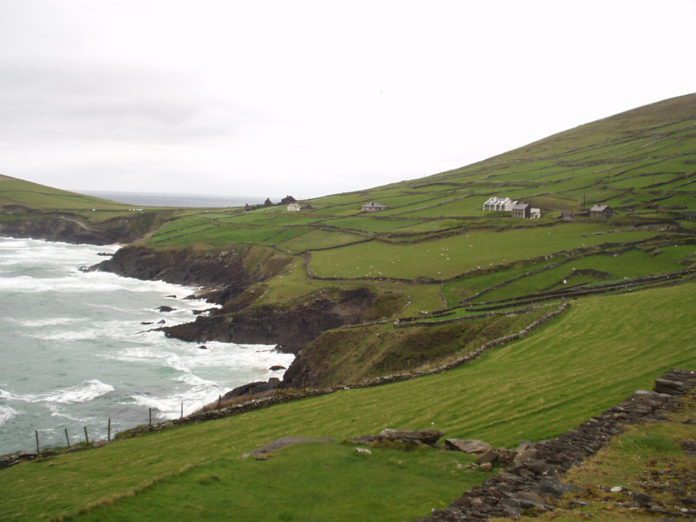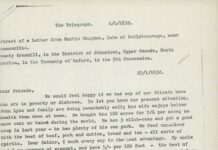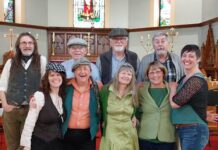Ever since I arrived in Canada, lo these many years ago, I have wondered why St. Patrick’s Day is such a popular celebration in this country. More than any other ethnic holiday, it seems the Irish have made theirs one that everyone enjoys. Is it the music, the fun, the songs and stories, or what we call in Ireland, “the craic”? Some will, of course, refer to alcohol consumption as the reason behind the popularity. But the fact remains, and the question still intrigues me.
St. Patrick’s Day is heading our way this weekend, and pubs and restaurants all over Canada will be filled to overflowing with Canadians of all ethnic backgrounds, eagerly singing songs and raising glasses. And what’s wrong with that? Not a thing, in my opinion. We have too few occasions in the year when we can all join together in fun and frolics.
But the Irish have given so much more to Canada, and to our own community, than just an excuse for a party. The Irish immigrant experience here has not always been a happy or peaceful one, and even today there are so many negative stereotypes floating around that bring us back to those less happy times.
Other ethnic groups have taken the place of the Irish these days, becoming figures of ridicule, suspicion and even hatred; but the Irish got there first. Although they were the largest single ethnic group in Ontario throughout the Nineteenth Century, the Irish were seen as disloyal, possibly dangerous, and certainly less “civilised” than the host community. In newspapers and periodicals of the time, when a cartoonist wanted to draw an Irish man, they drew an ape in clothes, usually smoking a corncob pipe, and wearing a battered hat. Try doing that with any ethnic group today!
In North Grenville, we have even more reason to celebrate the Irish national holiday. After the War of 1812, it was mostly Irish ex-soldiers and immigrants who settled in this area, protecting the planned Rideau Canal from American invasions. The Canal itself was the key to opening up this region to widespread settlement, providing a highway for settlers, again mostly Irish, to come and settle on lands that had been left empty since surveyed in 1791.
The Rideau Canal was built mainly with Irish immigrant labour, unskilled men who dug the canal without machines or anything other than a shovel and a wheelbarrow. Around 1,000 men, mostly Irish, died on that project. Many died from malaria from working in the swamps, others from explosions as inexperienced men were ordered to set off dynamite under the massive trees that barred the way. Others were killed when they had to dig out the roots of those trees, which collapsed on them. Sad stories, recorded in cemeteries along the length of the world’s longest skating rink.
Until the 1891 Census, the Irish accounted for around 25% of the Ontario population, and they were to be found at every level of society and commerce. In North Grenville, men like Dr. Charles Ferguson, M.P.; Robert Bell, founding Director of the Bytown and Prescott Railway and owner of the Ottawa Citizen; Rickey Waugh, owner of the mill in Oxford Mills and builder of the Brigadoon building; Francis Jones, who built the lovely stone building at Clothier and Sanders Streets in Kemptville; John Acton, after whom Acton’s Corners is named; and so many others, famous and unknown, who contributed to making North Grenville what it is.
There is a great saying that you need more than one story. Meaning, no-one, and no people, can be summed up in one story, one idea, one image. Canadians are more than Ontario, more than hockey, more than Leonard Cohen, for example. There is diversity and a wealth of other stories that can be told about Canada and Canadians. So it is with Ireland and the Irish. It is said that Canada has too much Geography and not enough History, where as Ireland has too much History and not enough Geography. I’m not at all sure about Canada and History, but the saying is too true of Ireland. Ireland is more than Orange and Green, fighting and history. It is a land that produced four winners of the Nobel prize for Literature, and all four winners (Yeats, Beckett, Shaw and Heaney) were writing in English, not the Irish language.
We love words in all formats: songs, plays, poetry, discussion and debate. We sometimes come across as “opinionated”, perhaps, but that is part of the Irish love of argument and discovery: we just can’t help it. So, enjoy St. Patrick’s Day this weekend. Have a pint or two, by all means (preferably Irish beer), and join in on the old songs: just avoid those American ones we try to avoid (When Irish Eyes are Smiling is my favourite one to hate).
And, to end on what seem a stereotypical note:
May the road rise up to meet you.
May the wind always be at your back.
May the sun shine warm upon your face, and rains fall soft upon your fields.
And until we meet again, may God hold you in the palm of His hand.










“Dynamite… invented by the Swedish chemist and engineer Alfred Nobel in Geesthacht, and patented in 1867.” – wikipedia
South of the border, where the Irish had nearly as hard a time as they did in 19th Century Ontario, Walt Kelly had the three Bats questioning about St Patrick’s day, and conclude: “March! Today in this country everybody is Irish.”